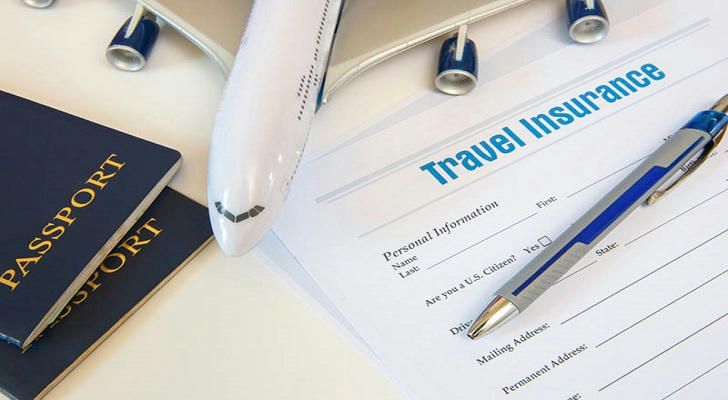Travel Insurance: Your Ultimate Guide to a Stress-Free Journey
Planning a trip? Don’t forget travel insurance! This comprehensive guide covers everything you need to know about travel insurance, including its types, coverage, benefits, and how to choose the right plan for your journey. Stay protected and travel with peace of mind.

What is Travel Insurance?
Travel insurance is a specialized insurance product designed to protect travelers from unforeseen events and emergencies during their trips. It provides financial coverage for incidents such as medical emergencies, trip cancellations, lost luggage, and travel delays. Whether you’re traveling domestically or internationally, travel insurance ensures that you’re prepared for the unexpected, allowing you to focus on enjoying your journey.
Why Do You Need Travel Insurance?
Traveling involves a certain level of risk, from flight cancellations to medical emergencies. Without travel insurance, these unexpected events can lead to significant financial losses and stress. Travel insurance acts as a safety net, offering financial protection and assistance when things go wrong. It’s not just a luxury—it’s a necessity for every traveler.
Types of Travel Insurance
Travel insurance comes in various forms, each tailored to different travel needs. Here are the most common types:
1. Domestic Travel Insurance
Domestic travel insurance is designed for travelers exploring their own country. It typically covers:
Accidental injuries
Medical expenses
Lost or delayed luggage
Trip cancellations or interruptions
This type of insurance is ideal for short trips, road trips, or vacations within your home country.
2. International Travel Insurance
International travel insurance is essential for those traveling abroad. It includes all the benefits of domestic travel insurance and adds:
Emergency medical evacuation
Coverage for high medical costs in foreign countries
Trip delays or cancellations due to unforeseen events
Personal liability coverage
If you’re traveling overseas, this type of insurance is a must-have.
3. Schengen Visa Insurance
For travelers visiting Schengen countries in Europe, Schengen visa insurance is mandatory. It meets the specific requirements for a Schengen visa and provides:
Minimum medical coverage of €30,000
Emergency medical evacuation
Repatriation of remains
This insurance ensures compliance with visa regulations while offering essential protection.
4. Adventure Travel Insurance
If your trip involves high-risk activities like skiing, scuba diving, or hiking, adventure travel insurance is necessary. It covers:
Injuries from adventure sports
Emergency rescue operations
Specialized medical treatments
Make sure your policy includes coverage for any high-risk activities you plan to undertake.
What Does Travel Insurance Cover?
Travel insurance policies vary, but most plans offer the following key coverage areas:
1. Medical Expenses
Travel insurance covers medical treatment costs if you fall ill or get injured during your trip. This includes:
Hospital stays
Doctor visits
Prescription medications
Emergency dental care
For international travel, this is particularly important as medical costs abroad can be exorbitant.
2. Trip Cancellation or Interruption
If you need to cancel or cut short your trip due to unforeseen circumstances (e.g., illness, family emergencies, or natural disasters), travel insurance reimburses your non-refundable expenses, such as:
Airfare
Hotel bookings
Tour packages
3. Lost or Delayed Luggage
Travel insurance compensates you for lost, stolen, or delayed luggage. This coverage helps you replace essential items and continue your trip without major disruptions.
4. Travel Delays
If your flight is delayed or canceled, travel insurance covers additional expenses like:
Accommodation
Meals
Transportation
5. Emergency Evacuation
In case of a serious medical emergency, travel insurance covers the cost of emergency evacuation to the nearest medical facility or your home country.
6. Personal Liability
If you accidentally cause injury to someone or damage their property during your trip, personal liability coverage protects you from legal and financial repercussions.
How to Choose the Right Travel Insurance?
Selecting the right travel insurance plan requires careful consideration. Follow these steps to make an informed decision:
1. Assess Your Needs
Consider your destination, trip duration, and planned activities. For example, if you’re traveling to a remote area, ensure your policy includes emergency evacuation.
2. Compare Policies
Compare different insurance providers and their offerings. Look for:
Coverage limits
Exclusions
Premium costs
Customer reviews
3. Check for Exclusions
Read the policy document carefully to understand what’s not covered. Common exclusions include pre-existing medical conditions and high-risk activities unless specified.
4. Buy Early
Purchase travel insurance as soon as you book your trip. This ensures coverage for unexpected events that may occur before your departure.
5. Choose a Reputable Provider
Opt for a well-known insurance company with a strong track record of customer service and claims processing.
How to Make a Travel Insurance Claim?
Filing a travel insurance claim is straightforward if you follow these steps:
1. Report the Incident
Contact your insurance provider immediately after an incident. Provide all necessary details and documentation.
2. Gather Documentation
Collect all relevant documents, such as:
Police reports (for theft or loss)
Medical reports and bills
Receipts for additional expenses
Proof of trip cancellation or delay
3. Submit the Claim
Submit your claim form and supporting documents to the insurer. Most companies allow online submissions for convenience.
4. Wait for Processing
The insurer will review your claim and may request additional information. Processing times vary but typically take a few days to a few weeks.
5. Receive Payment
Once approved, the insurer will reimburse you according to the policy terms.

Tips for Maximizing Your Travel Insurance
Read the Fine Print: Understand the terms and conditions of your policy to avoid surprises during claims.
Keep Records: Save all receipts, tickets, and documents related to your trip and any incidents.
Carry Your Policy Details: Keep a copy of your insurance policy and emergency contact numbers with you at all times.
Stay Informed: Be aware of local laws and healthcare facilities at your destination.
Conclusion
Travel insurance is an essential part of trip planning, offering financial protection and peace of mind. Whether you’re exploring your home country or venturing abroad, the right travel insurance plan ensures that you’re prepared for the unexpected. By understanding the types of coverage, how to choose a policy, and the claims process, you can travel confidently and focus on creating unforgettable memories.
